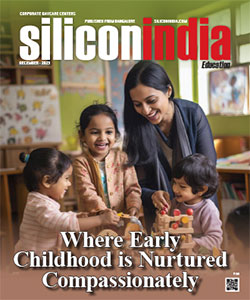Factors influencing India's economic growth through spending on apparel in the last decade
![]()
Fashion helps us portray a society’s appreciation other than an agenda in regards to the consumer’s instinctive nature. Just like India’s fashion industry and companies like Stylecaret, it is characterized in their belief and culture. It is important to spend on apparel to suit different needs. In Indian society, it is a form of verbal communication depending on how you dress and your appearance in general. It also shows your type of lifestyle, and how you socialize among the people. Fashion trends are on an increase in India and they have been a success since they have been socially accepted. As much as there are different fashion trends, all of them have given a boost to the economy in various ways through the different economic classes. The middle class is among the highest spenders on apparel in India. Their cash liquidity is based on easy access to fashion apparel around them and successful online delivery.
The retail market
The private consumption in India has been the main boost for its economic growth. It is constituted in the share of merchandise that is growing rapidly from a decade ago and expected to hit 975 pounds by the year 2022. As much as there has been an increase in urbanization, the population in rural areas has evened out the spending between the two and they have contributed to a growth in the economy. This is so since most people still leave in the rural areas as much as there has been a demographic shift of a move to urban areas. The retail market in India is traditional with over 20million independent outlets across towns and villages. However, most of them are a share between the offline and online retail at least for the last decade. This has been an influence on India’s economy and also helps the consumer be able to access the clothes whether on the brick and mortar store or the online store.
The state of India's fashion
![]()
Kids in India account to nearly 20% of the total market share in fashion in comparison to the men and women. This is because of India’s demographics the children below the age of 15 are approximately 350 million making their market share higher. This has caused a boost in spending of kid’s fashion clothes and as a result, it is a contributing share to the growth of the economy. The steady increase in Indian spending has brought about an increase in both local and international brands who are still increasing in number from recent years. International fashion brands like Zara have had huge success in the Indian market and are increasingly growing since the past decade. Due to the lack of more retail space, they have established online which helps them gain more consumers across India. These international brands also boost the economy by collaborating with the Indian fashion industry.
Generation Z
![]()
Untidy and shabby short hairstyles, sagging clothes are the fashion statement for this generation. These digital natives for them to fit in the current fashion trends have a high consumption rate and are known to have frequent purchases of various trends as they emerge. It may look as strange fashion but the generation Z of India is also the influencers of internet pages and sites. Given it is the time for “selfies” they are fast and efficient to increase the social media presence of a brand. Through the many social media sites, they have one can easily tell a brand or design that is trending at a particular time due to the outreach they create among one another. This generation also dictates brands type of attire. When the feel is to go eco-friendly they motivate the move and trends have been changing in various fashion sectors because of their social needs.
Social agenda
Indian society for a long time has portrayed a certain style of dressing based on the culture that gives them consumer identity in any environment. This shows how they socialize and their social agenda with their lifestyle and fashion choices. The social agenda has allowed more spending on apparel and overall it has been a drive to economic growth. In other words, the social agenda changes from one period to another and also allows the fashion trends to fit in too. Since they set clothing standards prevailing from the social values of its consumers. Through the social agenda, there has been a steady rise in consumption of styles that add an element of elegance and have demystified common fabric notions. For instance, knitted stretch garments. Some of these consumption styles that have increased in spending for the Indian consumer are jogger pants, waist trainers and tulle skirts to mention a few.
Youth
Today’s Indian youth have a tendency to shop, try and experiment in various trends especially the latest ones. Therefore, they decide the lifetime of a fashion trend given their predictable audacity. The web technologies, the geographical distance has been brought closer by the globalized world. This changes the Indian youth buying behavior since they are hooked to social networks and as they socialize they are able to see what they are missing out or what is trending in their age group. Hence through this their spending nature increases and as they spend on clothes from their country within the brands they are able to boost their economic growth.
The rising wave in Indians entrepreneurial activity especially in the fashion industry. Both in the local and global markets have also motivated the need and access for the consumers to spend more. The entrepreneurial spirit has also led to private consumption and new consumer segments that have expanded since a decade ago. The more consumer consumption segments expand the more there will be an economic boost in India. Both local and international brands are under pressure to grow their market share due to the competitive intensity that is across the country since a decade ago and is continuously growing.
Read More News:
Common plumbing problems you can check yourself
Chandrayaan-2 Successfully Performs 2nd Orbit Raising Task: ISRO


.jpg)
